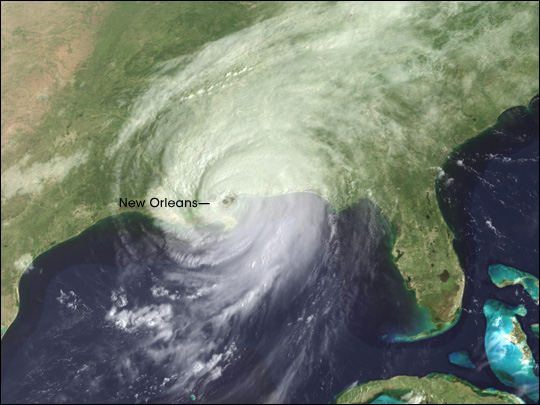
Stormy Future: Tropical Cyclone Risk to Increase

The risk that hurricanes and typhoons pose toward people may rise over the next 20 years because, despite a projected drop in the frequency of these giant storms, their intensity likely will increase, a new study suggests.
Hurricanes and typhoons are storms collectively known as tropical cyclones. They usually form in the world's tropical regions, and each spins around a center known as an eye.
Tropical cyclones can wreak havoc with extreme winds, torrential rains, high waves, extensive coastal flooding and damaging landslides. The past 50 years or so have seen the highest death tolls and greatest damages on record for these kinds of storms — the 1970 Bhola cyclone in Bangladesh killed about 300,000 people, while Hurricane Katrina inflicted $125 billion in losses in 2005.
Scientists have suggested that while the overall global frequency of tropical cyclones might drop in the future, they might strengthen in intensity, likely thanks to global warming. To see what impact this shift might have in the future, a group of researchers also took into account how many people will live in vulnerable areas, the levels of poverty there, and the levels of government action.
More people in harm's way
There were many unknowns in terms of the risk people might face from tropical cyclones, due to a lack of global data for what might be critical factors in the research team's calculations — for instance, the structural quality of buildings, which influences how well they stand up against storms. In the absence of such global data, researchers looked at proxies such as poverty, which indicated that people might not have the means to build high-quality structures.
The fact that both human populations and tropical cyclone intensity are projected to increase over the next 20 years suggests there will be a rise in the number of people exposed per year to these storms of nearly 12 percent.
Sign up for the Live Science daily newsletter now
Get the world’s most fascinating discoveries delivered straight to your inbox.
"Regardless of climate change, the increase in population is the main trigger that will increase exposure to tropical cyclones," researcher Pascal Peduzzi, an environmental scientist at the United Nations Environment Program, told OurAmazingPlanet.
Their findings suggest that approximately 150 million people will be threatened by tropical cyclones by 2030, compared with about 133.7 million now. The highest increase in annual exposure to these cyclones will take place in Asia, with a rise of 10.7 million exposed people along its Pacific Rim and 2.5 million along its Indian Ocean coast.
Action needed
"All exposed governments should take actions for reducing disaster risk," Peduzzi said. "Early warning systems, including storm surge warnings, should be improved; building codes and shelters should be also improved. International efforts on mitigating climate change by lowering greenhouse gas emissions should be pursued. Critical and vulnerable infrastructures should be reviewed and retrofitted if they are located in tropical-cyclone-prone areas." [Storm Targets: Where Hurricanes Hit]
The researchers would like to continue working with climate change scenarios, "including sea level rise and related beach erosion in relation with potential impacts from storm surges," Peduzzi said.
"The potential role of ecosystems in mitigating these impacts," Peduzzi said, "such as the role of coral reefs, mangroves and other marine and coastal systems, would be interesting."
"I'm not saying that ecosystems can solve all the issues, but so far, most of the efforts for protecting coastal infrastructures and populations are mostly based on engineering solutions, whereas we don't know how much we can do by protecting or restoring ecosystems," he added.
Peduzzi and his colleagues detailed their findings online Feb. 12 in the journal Nature Climate Change.
This story was provided by OurAmazingPlanet, a sister site to LiveScience. Follow OurAmazingPlanet for the latest in Earth science and exploration news on Twitter @OAPlanet and on Facebook.










